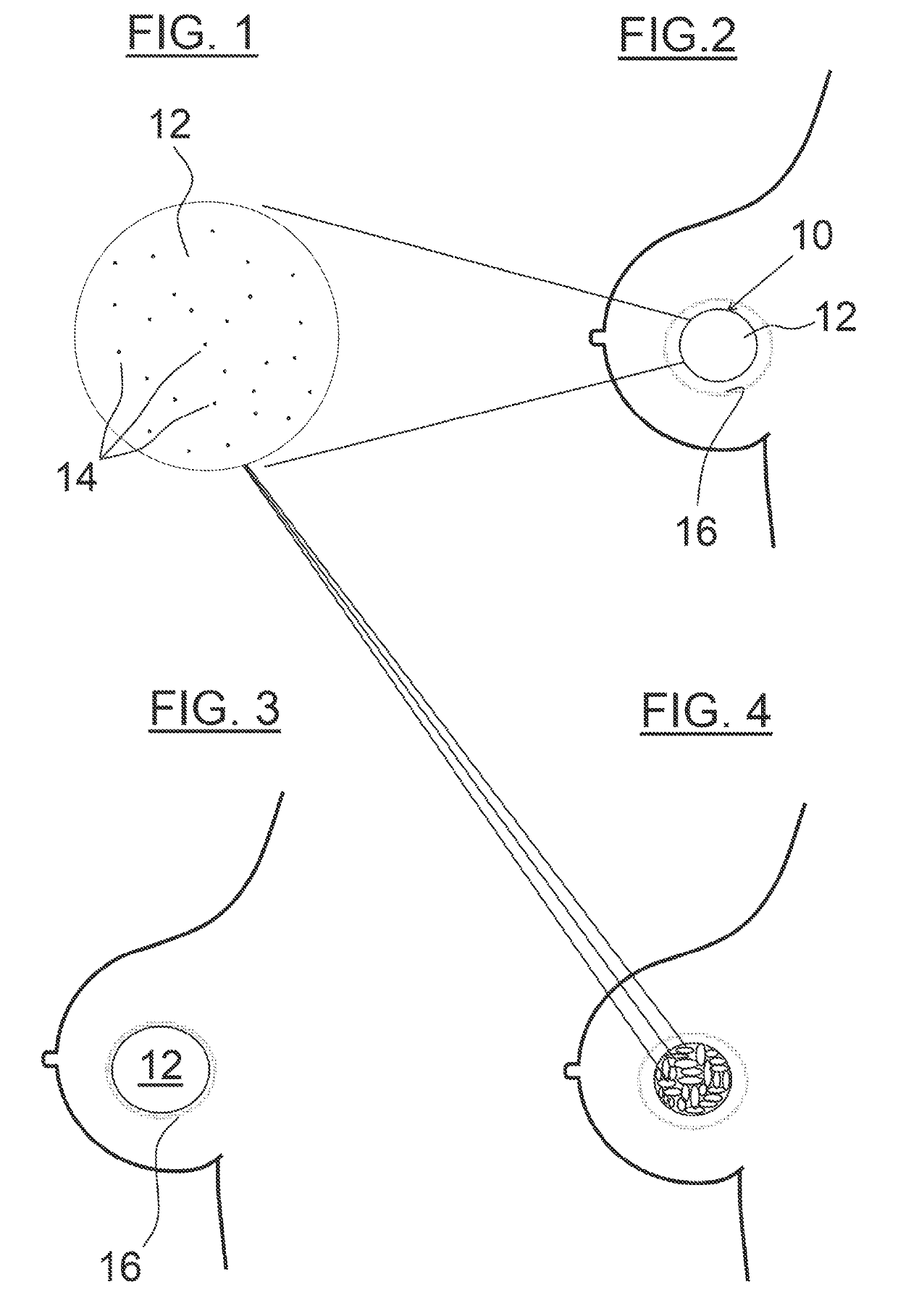Device and method for delivering medicaments
a technology of medicaments and devices, applied in the field of devices and methods for delivering medicaments, can solve the problems of limiting the useful exposure to a short range of x or gamma rays, affecting the repair capacity of intrinsic radio sensitivity proliferation rate, and being difficult to control host factors such as oxygenation, so as to facilitate the passage of carriers and reduce the strength of sources
- Summary
- Abstract
- Description
- Claims
- Application Information
AI Technical Summary
Benefits of technology
Problems solved by technology
Method used
Image
Examples
example 1
[0070]A preferred embodiment is the use of shaped soft tissue equivalent carriers in which a permanent radioactive seed is centrally spaced (or otherwise optimally spaced viz the effected tissue). Palladium and Iodide seeds are the most attractive commercially available radio isotopes. The seeds placed in such a carrier are homogeneously (i.e. evenly) spaced when subsequently placed within a target volume. Bunching of sources in a specific area and other volumes in which there is a paucity of sources is avoided.
[0071]A suitable material would have similar consistency of the normal tissue it is replacing (such as breast), and be hypo allergenic. This material would not leak and would have an appropriate geometry. In the breast cancer scenario, RDC material would have a radio isotope seed buried within its center (i.e., in a specific central area). Also, the RDC defines a shape similar to the dose pattern of the radioisotope seed utilized. This prevents over exposure and uneven dosage...
example 2
[0084]A specific treatment protocol comprises preparing a plurality of RDC / radioisotope composites in the shape to mimic the radiation dose emanating from a naked radioisotope particle. For example, radioisotope particles that are rod shaped emit higher doses of radiation along their length compared to at their ends. As such, a suitable RDC encapsulating these particle shapes would be more ovoid so that radiation doses permeating through them are similar over the entire surface of the RCC. Other suitable shapes include spheres, spirals, planar structures, and combinations thereof. The composites are then delivered to the surgical theatre such as the operating room, wherein the composites are positioned within a lumpectomy site, or other such local resection site.
[0085]A first step in the process is to place a balloon spacer within a lumpectomy site in order to complete the pathological evaluation of the patient for treatments. The evaluation includes calculating the distance of a ra...
example 3
[0088]An embodiment of the carrier / radioisotope composite resembles a slab or planar substrate. Such a planar implant (useful for treating meningiomas) comprises a reversibly deformable tubular substrate shaped into a slab to define a substantially two-dimensional entity. Radioactive particles are attached onto outside surfaces of, or alternatively inserted into, the so-shaped tubular substrate. Suitable tubular substrate is comprised of at least partially radio-transparent material such as plastic, memory nitinol. This configuration would have a fixed geometry.
[0089]Possible applications for this example include treatment of neoplasms of the neck, chest, abdomen and pelvis.
[0090]The present methods can involve any or all of the steps or conditions discussed above in various combinations, as desired. Accordingly, it will be readily apparent to the skilled artisan that in some of the disclosed methods certain steps can be deleted or additional steps performed without affecting the vi...
PUM
 Login to View More
Login to View More Abstract
Description
Claims
Application Information
 Login to View More
Login to View More - R&D
- Intellectual Property
- Life Sciences
- Materials
- Tech Scout
- Unparalleled Data Quality
- Higher Quality Content
- 60% Fewer Hallucinations
Browse by: Latest US Patents, China's latest patents, Technical Efficacy Thesaurus, Application Domain, Technology Topic, Popular Technical Reports.
© 2025 PatSnap. All rights reserved.Legal|Privacy policy|Modern Slavery Act Transparency Statement|Sitemap|About US| Contact US: help@patsnap.com

